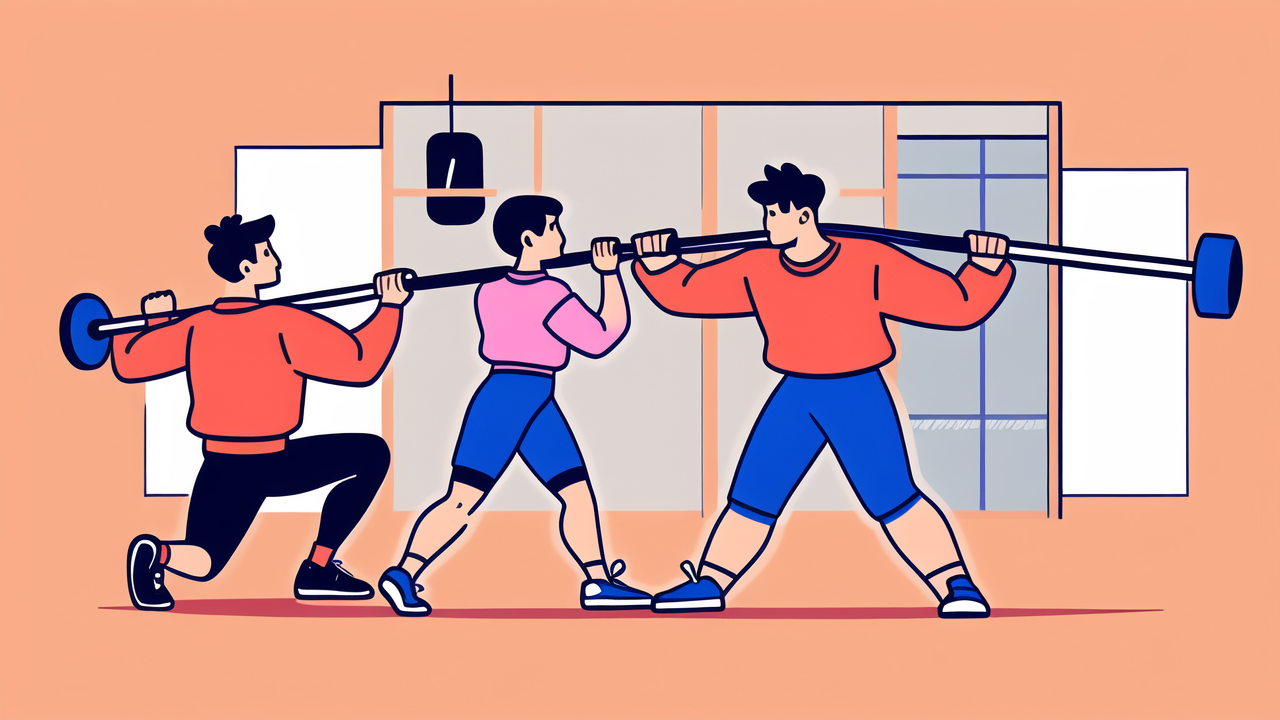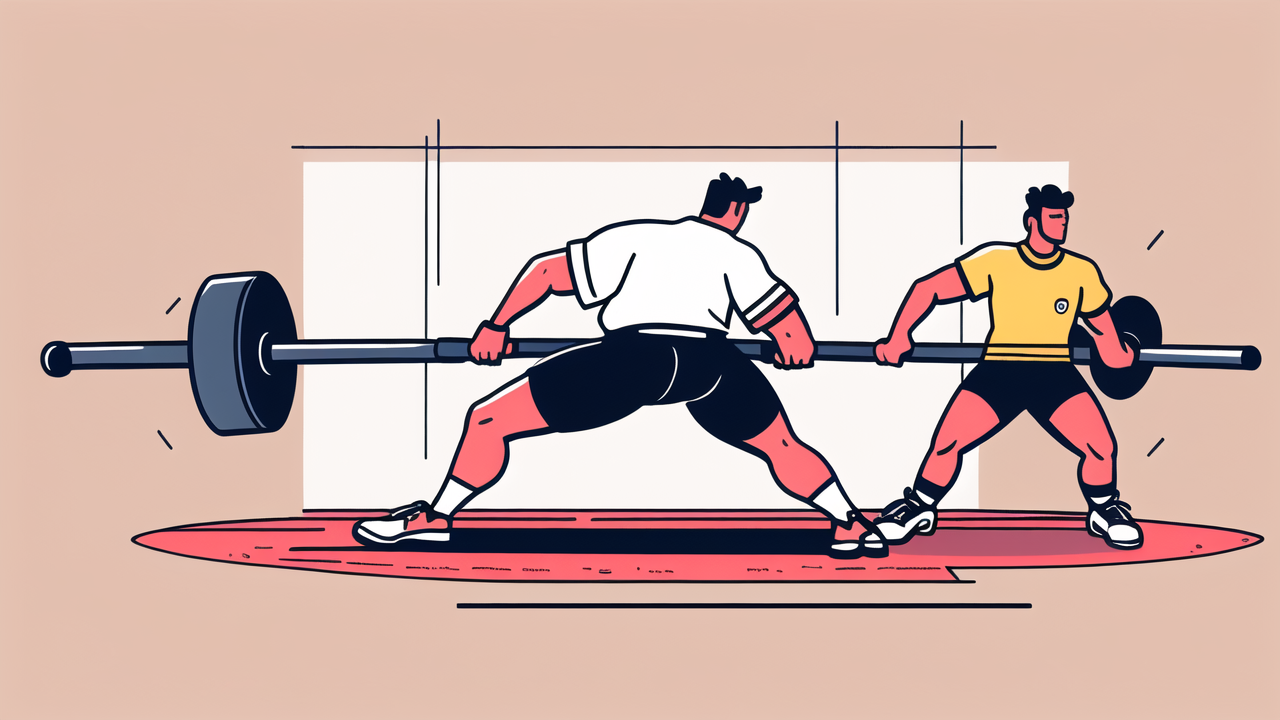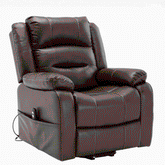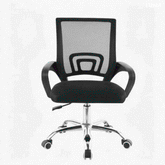Master Weightlifting Safety: Essential Tips for South African Gym-Goers
Why Safety in the Weight Room Matters: Understanding the Risks
The Importance of Proper Technique and Form
Proper technique and form are crucial in the weight room. They help prevent injuries and boost workout efficiency. Bad form can lead to strains, sprains, or worse. It's vital to learn the correct way to perform each exercise.

Start with lighter weights to master the movements. Focus on your posture and alignment. Engage the right muscle groups for each exercise. Don't rush through reps. Control the weight throughout the entire range of motion.
If unsure, seek guidance from a certified trainer. They can spot errors and teach you the right way. Remember, good form isn't just about safety. It also ensures you're targeting the intended muscles effectively. Take time to learn and practice proper form before increasing weights.
How Safety Equipment Can Protect You
Safety equipment is your first line of defense in the weight room. It can prevent accidents and reduce the risk of injury. The right gear can make a big difference in your workout experience.
Key safety items include proper footwear, lifting belts, and wrist wraps. Shoes with good grip prevent slips. Lifting belts support your back during heavy lifts. Wrist wraps can help stabilize your wrists.
Don't forget about spotting equipment and safety bars. These can save you if you fail a lift. Always use collars to secure weights on barbells. This stops plates from sliding off. Remember, safety equipment is only effective when used correctly.
Essential Safety Gear for the South African Weight Room
Must-Have Items for Every Weight Lifter
Every weight lifter should have certain safety items. These basics help protect you during workouts. They're essential for both beginners and experienced lifters.

- Proper athletic shoes: Choose shoes with good support and grip.
- Lifting belt: Use for heavy squats and deadlifts to support your lower back.
- Wrist wraps: These help stabilize your wrists during pressing movements.
- Knee sleeves: They provide compression and warmth to your knee joints.
- Chalk: This improves your grip on barbells and dumbbells.
- Weight collars: Always use these to secure plates on barbells.
- Towel: Keep one handy to wipe down equipment and maintain hygiene.
Remember, even with the right gear, proper form is still crucial. Don't rely solely on equipment for safety. Use these items as part of a comprehensive safety approach in your workouts.
Advanced Gear for the Experienced Lifter
Experienced lifters may benefit from additional safety gear. These items can help push limits safely. They're not necessary for everyone but can be useful for advanced training.
- Weightlifting shoes: These provide a stable base for heavy lifts.
- Squat suit: It offers extra support during maximal squats.
- Bench shirt: This can help protect your shoulders during heavy bench presses.
- Deadlift straps: These assist with grip during heavy deadlifts.
- Lifting chains: Add variable resistance to exercises.
- Safety squat bar: This bar reduces stress on shoulders during squats.
- Foam roller: Use for self-myofascial release before and after workouts.
Always learn proper use of advanced gear before incorporating it. Misuse can lead to injury or hinder progress. Consult with a trainer if you're unsure about any advanced equipment.
Implementing Safety Protocols in Your Routine
Establishing a Routine for Warm-Up and Cool-Down
A proper warm-up and cool-down routine is crucial for safety. It prepares your body for exercise and helps prevent injuries. Make these practices a non-negotiable part of your workout.

Start with 5-10 minutes of light cardio to increase blood flow. This could be jogging, jumping jacks, or cycling. Next, do dynamic stretches to improve flexibility. Focus on the muscle groups you'll be working that day.
Include activation exercises for key muscle groups. This helps ensure proper form during your main lifts. For example, do bodyweight squats before heavy leg work. End your warm-up with lighter sets of your first exercise.
After your workout, cool down with 5-10 minutes of light cardio. This helps your heart rate return to normal. Follow with static stretches to improve flexibility and reduce muscle soreness. Don't skip this step - it's crucial for recovery and injury prevention.
When to Stop: Knowing Your Limits and When to Seek Help
Knowing when to stop is as important as knowing how to start. Pushing too hard can lead to injury. It's crucial to recognize your limits and respect them.
Listen to your body. Sharp or sudden pain is a clear sign to stop. Dizziness, nausea, or extreme fatigue are also red flags. If you feel these, end your workout and rest.
Be aware of your form. If you can't maintain proper technique, it's time to stop. Poor form increases injury risk. It's better to do fewer reps with good form than more with bad form.
Don't hesitate to ask for help. If you're unsure about an exercise or feel something's wrong, seek advice. Gym staff or experienced lifters can often provide guidance. For persistent issues, consult a healthcare professional.
Remember, progress takes time. Rushing or overtraining can set you back. Stay patient and consistent. Your safety and long-term progress are more important than any single workout.




